Champakulam Kalloorkkadu St Mary’s Church- The Hidden Pearl in Nasrani History
Introduction
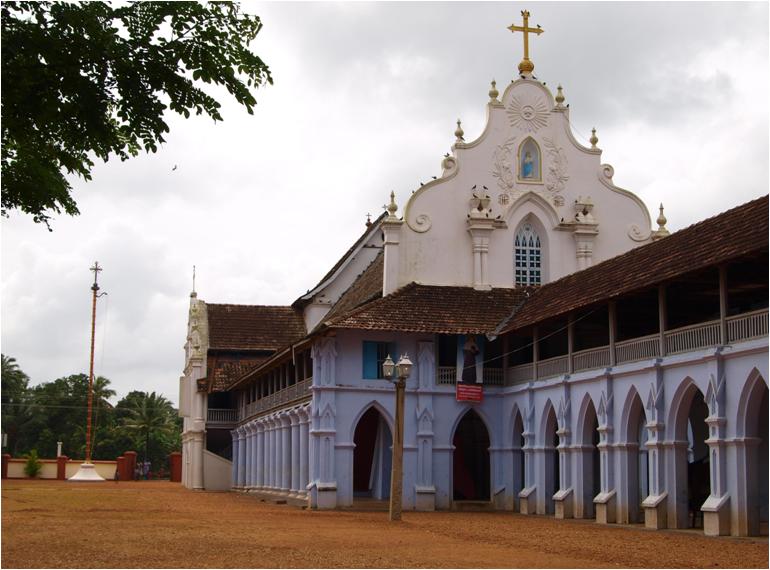
Champakulam Kalloorkkadu church is one of the most ancient churches in India. It belongs to the Archeparchy of Changanacherry, of the Syro Malabar Church. Champakulam church is the mother church of almost all Catholic Syrian churches in Alleppey district in Kerala State. It was founded in AD 427. The Christian community of Kalloorkkadu originated from the Niranom Church which was founded by St Thomas the Apostle himself. Champakulam comes among the second generation of ancient St Thomas Christian churches in Malabar which were formed from the so called seven first generation churches founded by St Thomas the Apostle himself. (( 1.Bernard Thomas, Keralathile Marthoma Christianikal (St Thomas Christians of Kerala) p412 (Publisher John Pellisserry, cited in Changanacherry Athiroopatha Innale Innu vol II Ed Jacob Nellikkunnathu, p260) Mailakombu, Kaduthuruthi, Aruvithura, Kuravilangadu, Kalloorkadu (Champakulam), Udayamperur and Edappalli are considered to be the second generation churches. Tradition says the first generation churches as Kollam, Palayoor, Kokkamangalam, Kottackavu, Niranom, Chayal, Nilackal))
Champakulam is a remote village in Kuttanadu Taluk of Alleppey district. The ancient church at Champakulam has a unique place in the history of Christianity in Malabar. It was involved in many historic events. It had a pivotal place in the efforts of reunion of Catholic Syrians and the Jacobite Syrians in the 18th century. Originating from Niranom church, Champakulam had very close relations with the Jacobite Syrian group and many Jacobite Syrian priests and their prelates even the Mar Thoma VI celebrated Holy Offices here. (( 2.Niranom Grandhavari- Patanavum samshodhanayum, M Kurian Thomas, Sophia Books Kottayam (Chronicles of Niranom, a study and analysis) p106 ))
The church was bolstered by the Devanarayanans of the Chempakassery kingdom and had very close relations with the Ambalapuzha Sree Krishna Swamy Temple which was the head quarters of the Kings of Chembakasserry. Even today, Champakulam church participates in the famous Champakulam Moolam Boat race, which is a commemoration of the Procession of the idol of Lord Krishna to Ambalapuzha by providing rope and bamboo every year for the boat race as a ritual.
Ancient accounts
Champakulam church is called Kaloorkkadu church in the ancient records with reference to the name of the place. Kalloorkkadu angadi was very famous in the past when Purakkadu port was a prominent port between Musiris and Kollam. (( 3.Changanasserry athiroopatha innale, innu, vol II, Ed Jacob Nellikkunnathu, p261 citing A Sreedhara Menon, History of Kerala, p87
Indian geographical Journal Vol V, VI p236-238 suggests that Barake was on the mouth of river Baris which is the River Pamba and Nelcynda was an inland city on the river. Barake exports pepper from Nelcynda. According to Periplus, Nelcynda was 500 stadia away from Musiris and 120 stadia from Barake. These distances are fairly correct if we take Nelcynda to be Niranom and Barake to be Purakkadu.))
Kalloorkkadu was on the commercial route from the eastern Kerala like Aarpookkara, Kudamaaloor, Kuruppampady and Kaduthuruthy and others, to the port at Purakkadu and the spice trade was through this route until Alleppey gained more prominence. The port at Purakkadu has been mentioned in many ancient books like Periplus of the Erythrean Sea and the Book of Duarte Barbosa. Periplus of the Erythrean Sea mentions about pepper trade from cottonora which has been interpreted by many as Kuttanadu. (( 4.Periplus of the Erythrean Sea Part II containing an account of navigation of the ancients from the Gulf of Elana, the red sea to the land of Ceylon, William Vincent DD, 1805
“ In conformity with this system, we find, that throughout the whole which the periplus mentions of India, we have a catalogue of the imports and exports only at the two ports of Barugaza and nelkunda, and there seems to be a fixed distinction between the aerticles appropriate to each. Fine muflins and ordinary cottons are the principal commodities of the first, tortoise shell, pearls, precious stones, silk, and above all pepper seems to have been procurable only at the latter. This pepper is said to be brought to this port from Cottonora, generally supposed to be a province of canara, in the neighbourhood of nelkunda, and famous to this hour for producing the best pepper in the world except that of Sumatra.” ))
Duarte Barbosa also mentions about Porca. (( 5.Description of the coasts of East Africa and Malabar in the beginning of sixteenth century, Duarte Barbosa ))
The Chembakasserry Dynasty and Champakulam church
The Chembakasserry Kingdom was founded in 12th century based at Kudamaalor by a Namboothiri with the help of a group of Nair warriors expelled from the Samoothiry of Calicut. These kings were called “Devanarayanans”. (( 6.Changanacherry Athiroopatha Innale Innu vol II, p261-262, Ed Jacob Nellikkunnathu, citing Kerala District Gazetteer, Alleppey, pp49-50 ))
They later invaded to the west and took over the Ambalapuzha area and moved his head quarters to Amabalapuzha. The famous Ambalapuzha temple was the palace of the king. This kingdom was called as Kingdom of Porca by the western historians with reference to the port at Purakkadu.
Antonio de Gouvea reports that the Church at Purakkadu was founded by the King as a gratitude for the blessings and favours he received from the God of the Christians during his war with the Queen of Wadakkumcoor. He had a lot of Christians in his army and during the war; one of the Cathanaars blessed the Christian army and asked the king to have a private flag for the Christian army with a cross in it. He won many wars with this flag. As a gratitude for his victories, he founded a church at Purakkadu with the title of Mar Sliba (Holy Cross) and brought some Christians from Champakulam to live there. The King himself planned to carry a big cross to the site of the church, but as he fell ill the King’s brother and heir carried it and planted there. Later, the King handed this church over to the Jesuites. (( 7.Jornada of Dom Alexis de Menesis: A Portuguese account of the Sixteenth Century Malabar, Ed. Pius Malekkandathil, LRC Publications Kochi, p370-371. ))
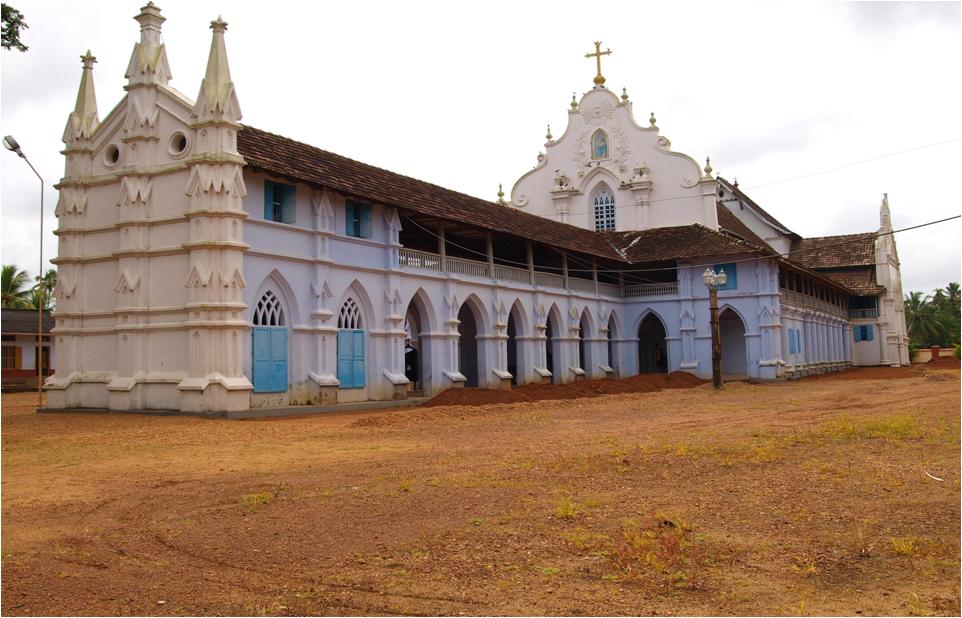
There is documentary evidence that these Devanarayanans helped and supported Champakkulam church. The church was exempted from tax. Later, when the Kingdom was taken over by the King of Travancore, the Travancore Government also honoured the same tradition, but decided a tax of 23.5 kalippanam and donated this sum to the church every year for lighting lamps in the church.
In AD 1544, the church was renovated by the initiative of a Devanarayanan. The last king of Chembakasserry donated some property to the church for the expenses of the Moonnu noyambu of Chamapakulam Church. (( 8.Changanacherry Athiroopatha Innale Innu, vol II, p261Ed Jacob Nellikkunnathu ))
History of the Church
By tradition, the original church was founded in AD 427. We have to assume that the old church might have been rebuilt and renovated many times. As with most of our ancient churches, there is not much documentation available. But, surprisingly we have a lot of information available from a few archaeological artefacts around the church.
It is believed that the first church was at the site of the present cemetery. Later, a new church was built at the land reclaimed from the river, probably in AD1151. We have clear evidence about the renovations done after AD 1151 from the inscriptions on the Champakulam Rock Cross.
It is believed that the Christians migrated to Champakulam from Niranom initially and then from places like Kuravilangadu, Kaduthuruthy, and Kudamaaloor when Kalloorkadu angadi became a commercially important place near the port at Purakkadu. (( 9.Changanacherry Athiroopatha Innale innu, Vol II, p 261, Ed Jacob Nellikkunnathu ))
Archaeological evidences
There are 5 artefacts identified by various researchers. Rev Fr Antony Vallavanthara has done extensive research about the history of the church and published them as an article “Pazhamayile paramaarthamgal” in the Diamond Jubilee Souvenir of the Leo XIII library in 1970s in which he describes about the first four artefacts. (I was a school student at that time and I kept this article for long time and as a school boy, I personally verified all those artefacts in and around the church. I think this article has inspired me some interest in the scientific study of history) (( 10. Pazhamayile Paramaarthamgal, Antony Vallavanthara, Souvenir of the Diamond Jubilee of the Leo XIII Library, Champakulam p127 cited in Changanacherry Athiroopatha Innale Innu, p262-263) ))
[Slideshow- Wait for the pictures to change automatically or roll over for navigation bar ]
1 A stone inscription seen on a step stone on the north side of front door of the church, directed to the west side of the mondalam (portico). This red coloured stone might have been a tomb stone. As this has been ignored as a step stone, most part of the inscription has been eroded and we can identify a cross on the top and digits 844 below it followed by partly worn off letters bordered with two lines on either sides. Experts are of the opinion that these inscriptions are in vattezhuthu- nanam monam of the old Malayalam and denote ME 844 which is AD 1669.
2 An inscription on a beam across the Church which reads “Mishiha Piranna 1730, Thamalloora itty Kuruvila kathanaar I cheelaanthy paniyichu. Ee kollam 905 meena matham”- This beam was built by Thamalloor Itty Kuruvila Kathanaar in AD 1730. This is in ME (Kolla varsham) 905, the month of Meenam.
This clearly indicates that this beam was replaced in the church in AD 1730 by Thamalloor Itty Kuruvila Kathanaar. This proves that the present Church building is built before AD 1730.
3 A palm leaf document kept in the Department of Archaeology, Government of Kerala in Trivandrum dated ME 996 Edavam signed by the Maha Raja of Travancoore, deciding 23.5 panam as tax to the church and allowing that sum to use in the church for lighting lamps.
4 Inscription around the open air rock cross situated on the south side of the church. This reads “Ea kurishu kalloorkkadu ennu prasidhi petta ea palliyude kizhakku vashathu stapichirunnu. Palli pani cheytha eeerekure 670 valsaram chenna 1821 kalam madbaha polichu pani kazhichappole polichu. 1857 kaalam semithery Pani Cheythappole randamathu vechu.”- This cross was placed on the east side of this church which is famous as Kalloorkkadu church. After about 670 years of building the church, that is in 1821, when the madbaha was refurbished, this cross was taken down. In 1857, when the cemetery was built, it was replaced.
This clearly states that there was some church building works done in AD 1151. This cross had been placed on the east side of the church. After 670 years, which is in AD 1821, the madbaha was refurbished and this cross was taken down. This must be the modifications by the Portuguese to the madbaha. This also indicates that the present building was constructed in AD 1151.
The present church building is close to the river. There is no chance that this cross was placed on the east side of the church as there isn’t enough space there. So, I assume that the inscription is talking about the old church. I have heard that the original church was at the site of the cemetery and it is possible that the cross was on the east side of the old church. They made a new church in AD 1151, and the cross was on the east side of the famous old church. They took this cross down in AD 1821 to replant in AD 1857 when the cemetery was built at the site of the old church. It has to be noted that this cross in the present position is in line with the small church in the cemetery.
5. This is an inscription mentioning about the renovation of the church in 1885 written with tar at the bottom of the dome above the Madbaha of the present church.
In “Changanasserry Athi roopatha Innale Innu vol II” Ed. Jacob Nellikkunnathu, mentions about a new church built in AD 1720. There is no mention of this event on the Rock cross inscription which clearly states about the building work in 1151, 1821 and 1857.The people behind the inscription, who wrote about the events in AD1151 would not have omitted the brand new church built in AD 1720. It seems that it was only a renovation in AD 1720 and the inscription on the wooden beam built by Thamalloor Itty Kuruvilla Kathanaar also points towards this possibility. If it was a new Church, no one would have inscribed it as a “beam was built”.
There is another indication for a renovation works in AD 1786 period which is reported by the famous historian Chithramezhuthu K M Varughese. In his series of articles titled “Champakulam palliyude Grandhavai- The chronicles of Champakulam Church- in Nasrani Deepika daily dated 30 sep 1921, 20 January 1922, 29 April 1922, and 2 May 1922, he mentions about the maintenance works done without the permission of the King of Travancore, the church authorities went to see the King on ME 17 Thulam 961 and the King accepted their excuses. (( 11. Chamapakulam Palliyude Grandhavary, Chthramezhuthu K M Varghese, Series of articles published in the Malayalam daily news paper Nasrani Deepika dates 30 September 1921, 20 January 1922, 29 April 1922, and 2 May 1922, cited in Changanacherry Athiroopatha Innale Innu Vol II p264, Ed Jacob Nellikkunnathu. ))
Jacob J Kurialacherry, in his book Kalloorkkadu palliyum Suriyani Christianikalum- Kalloorkkadu Church and Syrian Christians-about a renovation in AD 1544 with the help of the King of Chempakasserry. In AD 1885 also there was some renovation works and the renovated church was consecrated in AD 1891 by Mar Charles La Vingne, the then Bishop of Changanacherry. In 1985, the plastering of the church with lime was replaced with cement and the murals were renovated by experts. (( 12.Changanacherry Athiroopatha Innale Innu, Vol II PP265-266, Ed Jacob Nellikkunnathu.))
Champakulam Open air Rock cross
Open air rock crosses are a unique feature in St Thomas Christian Churches.
[Slideshow- Wait for the pictures to change automatically or roll over for navigation bar]
There are many discussions whether these crosses are European in origin or not. Antionio de Gouvea has reported that it is common in Malabar but very rare in Europe and other places. (( 13. Jornada of Dom Alexis de Menesis: A Portuguese account of the Sixteenth Century Malabar, pp187-188))
The Champakulam Rock Cross is very important as the inscriptions on it confirm that it was present even in AD 1151. This must be the most ancient open air rock cross found in Kerala with clear evidence about its age.
Church Architecture
We can assume that the present Church building was built in AD 1151 and it has undergone several renovations. There is no evidence of any major structural renovations after the arrival of the Portuguese. Hence, the Church Architecture can be taken as a model of ancient Syriac Christian churches in Malabar. It is important to note that Champakulam Church is one of the rare churches retained with East Syriac scheme of church architecture with Madbaha, Qestroma, sanctuary veils, bema, Hykkala etc. questioning the arguments of many modern day historians that Keralan Churches had no architectural facility for celebrating East Syriac Raza.
The madbaha and its decorations show strong Portuguese influence. This might be the modifications made by the Missionaries. Champakulam Church is famous for its ancient murals.
[Slideshow- Wait for the pictures to change automatically or roll over for navigation bar]
The side walls of the madbaha and the ceiling of the whole length of the church is beautifully decorated with ancient murals. As this is an old church, the inside is relatively dark and while you are inside, all you can see is the murals on the ceiling with blue sky, clouds and angels popping out from the clouds, pictures of the father, son and the Holy spirit all these create a mystic environment and you feel that you are not in this earth!
Champakulam Church in the Nasrani History
Champakulam Kallorkkadu Church has its own place in the Nasrani history. History of the pre Portuguese period is unclear. There is no documentation available about visitation of any East Syrian prelates or any Arch deacons or any important events in the ancient period. Before the arrival of Portuguese, Ankamali was the centre of all Nasrani politics. The politics moved to southern parts like Niranom only after the Arch deacon was evicted from the North by the political power of the Portuguese. Being close to Niranom, Champakulam also gained importance.
Alexis Dom Menesis and Synod of Diamper
It is not clear from available documentation about the representation of Champakulam church in the Synod of Diamper but Thomas Yeates in his book cites the Synodical Acts at Diamper and provide a catalogue of Syrian Christian Churches and Callurcata is one among them. (( 14. Thomas Yeates, Indian Church History (1818) p135, Asian Christology and the Mahayana, E A Gordon, 1921 p291 cites the synodical acts p 60, 65, 80. ))
Champakulam church might have participated in the Synod of Diamper and Arch bishop Menesis has visited Champakulam after the synod. It is reported by Antionio Gouvea that the Arch Bishop came to Champakulam from Pallippuram. As he did with every Nasrani Churches, he performed Confirmation to everybody as St Thomas Christians did not have a confirmation like the Latin Church. Thomas Yates comments that the Arch Bishop should have known that the Eastern Church administer to children, confirmation and the Eucharist with baptism. (( 15.Thomas Yeates, Indian Church History, (1818) p127 ))
During the confirmation, he changed names of many who had the name Iso- Syriac for Jesus- in the area which was common among the St Thomas Christians before the synod of Diamper. The Arch Bishop also endowed and helped with comfortable marriages of poor orphan girls which he himself performed. From Champakkulam, the Arch Bishop went to Purakkadu. (( 16. Jornada of Dom Alexis de Menesis: A Portuguese account of the Sixteenth Century Malabar, p369
Gouvea pronounce it as Iyo in his book and I personally know that “iyyo”s are in Champakulam which I think is “Job- iyyob”. But The Synod of Diamper ruled against the use of the Lord’s name) ))
This events are reported by other authors also like Thomas Whitehouse, James Hough etc. Thomas Whitehouse also reports that the Arch Bishop gave rice cakes to children with golden coins hidden in them to win the hearts of the people. (( 17. Lingerings of Light in the dark land, being researches into the past history and the present condition of the Syrian Church of Malabar, Thomas Whitehouse, p118. ))
Coonan Cross oath and subsequent Division, Joseph Sebastiani
It is very clear from Joseph Thekkedathu that Champakulam church was with the Archdeacon during and after the Great Coonan cross oath. It was only in July 1659, Champakulam and Kudamaloor churches joined the Catholic Syrian group by the order of the King of Purakkadu, who was an ally of the Portuguese. (( 18.The troubled days of Francis Garcia, SJ, Arch Bishop of Cranganore, Joseph Thekkedathu, p 143, citing, Archivio storico della Sacra Congregazione de Propanganda Fide Rome, Scritture Originati riferite nelle Congregazione Generali (APF, SOCG) 233 f 236 v Brevis et succinta relatio….Archivum Romanum Societatis Iesu (ARSI- Jesuite Archives) Goa 49, ff194v-195 narration by Fr Bras de Azevedo S J, ARSI Goa 68 I f 329 Fr Hyacinth to Garcia on 4th of July 1659. ARSI Goa 68I f 329v Garcia’s reply on 6th of July 1659, ARSI Goa ff169v-170 statement from the Vicar, cathanaars and seminarians from Kallurkkadu.) ))
Even with this, it seems that the Christians of Champakulam were resilient. We can read from James Hough that on 26th of August 1661, Arch Bishop Joseph Sebastiani visited Champakulam church, and the King of Purakkadu sent an officer to persuade Christians to attend and it was with difficulty that they could be induced to receive confirmation at the Bishop’s hands. (( 19.James Hough, History of Christianity in India, Vol II book 4 p 359))
Carmelite Missionary Paulinos de St Bartolomew
Paulini de St Bartolomew, an Austrian missionary who was in Malabar 1744-1790, was connected to Champakulam. Thomas Whitehouse reports that Paulinose was resident in Champakulam for a while and his accounts show light into the social history of the area. Paolinos describes “Callurcada as a district abounding in water which produces large quantities of rice. It may be called the granary of Malabar”. (( 20.Lingerings of Light in the dark land, being researches into the past history and the present condition of the Syrian Church of Malabar, Thomas Whitehouse, p 119 foot note ))
He suggests that the Christians of Champakulam were vegetarians, beef was not available and killing a cow for eating was forbidden in the state. He describes an incident in which 5 young men were sentenced to death by hanging for killing a cow for eating. (( 21. Lingerings of Light in the dark land, being researches into the past history and the present condition of the Syrian Church of Malabar, Thomas Whitehouse , p217 ))
Paolinos also describes, a young man pailo was converted to Christianity in the village of miraculous cross – kurinshingel- and given beef, he replied, that he regarded killing of a cow and eating its flesh in the same light as murdering his own mother and partaking of her flesh. This village of miraculous cross may be vaisyambhagom, a nearby village with a Latin rite church in the name of miraculous cross. This also shows light into the proselytization work done by the Carmelite missionaries based on the existing Syriac churches. When the Syriac churches were separated from Verapuzha diocese, this miraculous cross church remained in Verapuzha.
Whitehouse quotes Paulinus (( 22.Lingerings of Light in the dark land, being researches into the past history and the present condition of the Syrian Church of Malabar, Thomas Whitehouse, p220 ))
“Chandy, a cathanaar at callurcada had written to inform him that some native Christian women in his neighbourhood were living in concubinage with certain nairs. Paolinos raised this issue to the Diwan and got a letter to the chief native officer at Ambalapolay who was directed to render prompt assistance and those found guilty of this crime were to sent to Trivandrum under a military guard whilst the females were to have all their property confiscated.”
This throws light into the persistence of concubinage among Syrian Christians even at that time. We know that marriage was not a sacrament among Nasranis and concubinage was common even with Hindus and even among the Cathanaars. This practice was abolished by the synod of Diamper.
Abraham Hyacinthe Anquetil Du Perron
Du Perron was a French intellectual writer, traveller, interpreter and linguistic scholar visited Champakulam in 1758. Thomas Whitehouse describes Du Perron’s visit like this- (( 23.Lingerings of Light in the dark land, being researches into the past history and the present condition of the Syrian Church of Malabar, Thomas Whitehouse, pp118-119 ))
httpv://www.youtube.com/watch?v=rkH40T_uIEA
“He appeared to have been charmed with it describing it as a lovely spot surrounded by water, having many cattanaars attached to the church, in which they maintained a perpetual religious service. The church, with its group of collegiate buildings, has at the present day an imposing appearance from the broad stream which sweeps past it”.
Kallada Mooppan- Mar Andrews
Kallada Mooppan alias Anthrayose Kasseessa arrived in Kerala in 1676.
He appeared in Champakulam claiming that he was a Patriarch appointed by the Pope for St. Thomas Christians.In 1677, Raphael Figuerede was consecrated as the auxiliary Bishop to Palli Veettil Chandy Metran which created a lot of unrest among the Catholic Syrian group. When Palli veettil Chandy metran was consecrated as a Bishop, The Catholic Syrian group was hopeful that there is going to be a lineage of native Bishops from Palliveettil Chandy metran to mark the end of the foreign rule. But when Raphael Figueredo was posted as the auxiliary of Palliveettil Chandy metran, they became disappointed and Kallada Mooppan came in claiming that he was appointed by the Pope for the St Thomas Christians. He stayed at Champakulam for some time but when the Carmelites proved that he had no authority from the Pope and as he appeared addicted to alcohol, people were unhappy and he had to leave Champakulam.
Whitehouse’s accounts on Kallada Mooppan. (( 24.Lingerings of Light in the dark land, being researches into the past history and the present condition of the Syrian Church of Malabar, Thomas Whitehouse, p 199 ))
“When Mar Thoma IV presided over the Syrian party, A man with name Andrew, styled himself a Patriarch, and professed to be the bearer of a brief from the Pope; but the Carmelite missionaries reported him to be nothing more than Jacobite priest, Paoli says that he was much given to Wine on which account, he was not very acceptable to the Syrians who adhered to Mar Thoma. He came to Malabar in 1676, lived first at Callurcada, and afterwards at Kallida, where eventually fell into the river in a drunken fit, and was drowned. In 1788, Paoli ascertains that these southern schismatics call him as kallida mooppan or elder of their church, and offered cocks and hens at his tomb”.
There are other accounts also. As reported in Thulasserry Manapurathu Tharavadu History web pages, Alummoottil Oommen Cathanaar in his diary mentions that Mar Andrews was mispercepted as a drunkard, but he was prescribed toddy for his stomach ailments.
Kallada Mooppan is honoured by many sections even today as a saintly person and his feast is celebrated in Churches like Kallada, Puthiyacavu and Manarcaud.
In Niranom Granthavary, (( 25.Niranom Grandhavari- Patanavum samshodhanayum, M Kurian Thomas, Sophia Books Kottayam (Chronicles of Niranom, a study and analysis) p200 ))M Kurian Thomas discusses the identity of kallada Mooppan well as below.
1. According to Paulinose de St Bartholomew, Anthrayose Kasseessa was a Jocobite Priest. That was why, Paulinose considered the consecration of Mar Thoma II & III invalid as both were claimed to be consecrated by Mar Andrews.
2.Karottuveettil Mar Simon Dionysius’s manuscript p131 mentions Anthrayose as a Patriarch and Mar Thoma I and Mar Anthrayose Patriarch consecrated two Mar Thoma Metrans, but Kurian Thomas disputes this as Mar Thoma I passed away in 1670.
3. In a letter to Patriarch of Antioch in 1770, Mar Thoma IV describes him as a Bishop.
4. In an ancient wooden engraving found in Kundara church, Anthrayose kasseessa is pictured with the cap of a Chaldean Bishop.
5. Vettikkunnel Kudumba Charithram (History of Vettikkunnel family) comments that Patrose Thritheeyan Patriarch declared Anthrayose as a Nestorian.
6 Anquetil Du Perron describes him as a Nestorian.
Bishop Anjalose Francis
Bishop Anjelose Francis visited Champakulam in AD 1712. (( 26.A double regime in the Malabar Church, Thomas Pallippurathukunnel, p132 cited in Changanacherry Athiroopatha Innale Innu Vol II Ed Jacob Nellikkunnathu p268 ))
Bishop Anjalose Francis was a Carmelite who was consecrated by Mar Simon, a Chaldean catholic Bishop, as the Latin rite Bishops and the Jesuites refused to consecrate him.
Mar Gabriel
Mar Gabriel was an East Syrian Bishop came to Malabar in 1708. Majority of St Thomas Christians accepted him. Mar Thoma had only 22 churches at that time and 42 churches accepted Mar Gabriel. (( 27.Indian Christians of St Thomas, Leslie Brown, P116 cited in Nasrani padanamgal, Indian orthodox sabha charithram, Joseph Cheeran, Sophia Print House Kottayam p 142))
Later, Mar Gabriel was converted to Catholic side. In the unstable political state of Nasranis at that time, we have to assume that Champakulam church also accepted Mar Gabriel as there is evidence that there were Cathanaars from Chamapakulam also ordained by Mar Gabriel. Paulinose reports that there was a senior cathanaar from Champakulam and a Gheevarghese kathanaar of Pallipuram were among those ordained by Mar Gabriel. (( 28. Lingerings of Light in the dark land, being researches into the past history and the present condition of the Syrian Church of Malabar, Thomas Whitehouse, p211
A double regime in the Malabar Church, Thomas Pallippurathukunnel p 143 cited in Changanacherry Athiroopatha Innale Innu vol II ))
Those who know the traditions of St Thomas Christians understand that without a desakkuri, an ordination is not accepted by the community and as these priests were accepted by the community, we have to assume that the community at Champakulam gave desakkuri for those cathanaars to be ordained by Mar Gabriel.
Puthenpurackal Ikkakko Cathanaar- Persecution by Missionaries
The story of Ikkakko kathanaar is a unique example for Portuguese persecution.
Ikkakko Kathanaar was from Champakulam and was the vicar of Edappalli church. He was persecuted and killed by the European Missionaries accusing him of stealing a monstrance) from the church at Verapuzha. (( 29.A monstrance is the vessel used in the Roman Catholic, Old Catholic, Anglican, and Lutheran Churches to display the consecrated Eucharistic Host, during Eucharistic adoration or Benediction of the Blessed Sacrament. http://en.wikipedia.org/wiki/Monstrance. ))
He was unlawfully kept in custody without food and died in prison. This infamous incident happened in 1787. This case was heard by a minister of the King of Travancore on ME 962 Medam 2 (1787) and the Carmelites were sentenced to pay a fine to the Governement. (( 30.Vartha mana Pusthakam, Paremmakkal Thomman Kathanaar, OIRSI Publications, Kottayam p 49 ))
Paremmakkal Thomman Cathanaar, the Governor of Catholic Syrians
Paremmakkal Thomman Kathanaar, the Governor of the Catholic Syrians was a regular visitor at Champakulam church. He was temporarily based at Champakulam during his talks with Mar Thoma VI regarding the unity of Catholic Syrians and Jacobite Syrians. Niranom Grandhavari narrates his travels between Champakulam and Niranom with Thachil Mathoo Tharakan. (( 31. Niranom Grandhavari- Patanavum samshodhanayum, M Kurian Thomas, Sophia Books Kottayam (Chronicles of Niranom, a study and analysis) p96 ))
Champakulam Church and the ecumenical efforts with Jacobite Syrians
Even the church was under Catholic Syrian group, there were priests of both groups resident there for example Anthrayose kasseessa. The division of St Thomas Christians after the Coonan Cross oath took place over a long time period until the Puthencoor officially adopted the West Syriac liturgy around AD 1789, both Puthencoor and Pazhayacoor were using the same East Syriac liturgy. (( 32. Niranom Grandhavari- Patanavum samshodhanayum, M Kurian Thomas, Sophia Books Kottayam (Chronicles of Niranom, a study and analysis 112,
Indian orthodox sabha charithram Joseph Cheeran p171,
Indian orthodox church, charithravum samskaravum p 438( IOC history and Culture ) Joseph Cheeran, K V Mammen, K C Mathew, Kottackal Publishers ))
[Slideshow- Wait for the pictures to change automatically or roll over for navigation bar]
As there were no difference in liturgy and practices and the division was about the leadership, there were no such a division at the community level and hence, the community had no problems with Priests or Bishops of the other group celebrating Holy orders. We can see in the history that many churches were mixed denominations- shared between Puthencoor and Pazhayacoor.
Champakulam church had a prominent position in the efforts for reunion of Puthencoor and Pazhayacoor. Paremmakkal Thomman Cathanaar and Mathoo Tharakan were the leaders of Catholic Syrian group. Mathoo Tharakan had a warehouse at Champakulam and hence Champakulam church became in important place for many discussions and negotiations with the Jacobite Syrians.
Niranom Grandhavari describes that “ME 966, kumbam 25 a group of Pazhayacoor including mampilli metran of kollam, Kochitty Kathanaar of Purakkadu, Narakathara Chandy Kathanaar of Kalloorkadu, Paremmakkal Governadore and fifteen Nasranis travelled from Purakkadu to Changannuur by a boat to meet Valiya Mar Dinvannasios. They celebrated the Kurisuvara Wednesday (Ash Wednesday) there on 26th and met with the Metropilitan and went to Kaloorkkadu.
ME 967 Kanni 20, they met in Kayamkulamm palli and because Mathoo Tharakan’s daughter died, they concluded the meeting and Governodor went to Niranom, stayed there for 4 days and then to Kalloorkadu. The next meeting was planned on 25th vrishchikam at Niranom to celebrate the Qurbana in the Chaldean way. Kochitty Kathanaar and People from Changanacherry, Kaloorkadu met in Niranom to celebrate Chaldean Qurbana but that meeting was also concluded due to the death of Mathoo Tharakan’s son.
ME 974 Edavam 29, after celebrating the Chaldean mass at Thathampalli, Mar Divanniose went to Champakulam and celebrated Qurbana there and on Midhunam 5, went to Puthiyakavu.” (( 33.Niranom Grandhavari- Patanavum samshodhanayum, M Kurian Thomas, Sophia Books Kottayam (Chronicles of Niranom, a study and analysis p96, 106 ))
The reunion of Mar Thoma VI was supposed to be held at Champakulam Church on the Sunday next to Puthu njayar- second Sunday of Easter in 1791 but due to the opposition of the Carmelite Bishop Aloysius, it did not happen. (( 34.Changanacherry Athiroopatha Innale Innu, vol II, p261Ed Jacob Nellikkunnathu, p271 ))
Rokos and Melus schisms
Bernard Thomas in his book Mar Thoma Christianikal, describes that out of 154 churches, 86 churches fully and about 30 churches partly joined with Mar Rokos. Bernard Thomas certifies that Champakulam Church kept away from Rokos and Melus schisms (( 35.Bernard Thomas, Marthoma christianikal pp728, 743, 744, cited in Changanacherry athiroopatha innale innu, Vol II, p271, Ed. Jacob Nellikkunnathu ))
Porukkara Thoma Malpan
Porukkara Thoma Malpan was from Champakulam. He was one of the founder fathers of the Carmelites of Mary immaculate, the first religious order for men among the catholic Syrians.
Bishop Mar Thomas Kurialacherry
During the time of Nidheerickal Mani Kathanaar, the community fought vigorously for native Bishops and restoration of Syro chaldeac rite. The Community realised that one of the important factors hampering the community from getting a native Bishop was lack of priests trained in Rome. So the community sent Thomas Kurialacherry from Kalloorkkadu to Rome as he was from a wealthy family who can afford to take the expenses. Thomas Kurialacherry returned from Rome and eventually became the first native Northist Bishop of Changanacherry. (( 36. Father Nidhiri, A hstory of his time, Abraham M Nidhiry, p319 ))
Modern History
Today, Champakulam church is the mother church of most of the Catholic Syrian churches in Alleppey District. The Forane Churches at Alleppey, Edathua and Pulincunnu were formed from Champakulam.
Sisters of the Adoration of the Blessed Sacrament (SABS) is a religious order for women founded at Champakulam by Bishop Mar Thomas Kurialacherry. Orslem Church and St Thomas School were established in association with the SABS congregation. From this humble start, the Congregation has now spread to other continents also like Africa. (( 37.Changanacherry Athiroopatha Innale Innu, Vol II, pp 271-272 ))
Promotion of education -Champakulam church took initiative in promoting the education in the region by taking over the Government Lower Primary School in 1896. This was upgraded to a High School in 1950. Leo XIII Library was also formed under the initiative of this church in 1914 which has evolved into one of the prominent libraries in Kuttanadu now. (( 38. Changanacherry Athiroopatha Innale Innu, Vol II, p 272, Ed.Jacob Nellikkunnathu ))
The following Parish churches are affiliated to Kalloorkkadu Forane Church. (( 39.Changanacherry Athiroopatha Innale Innu, Vol II, p 259, Ed. Jacob Nellikkunnathu, ))
Padaharam St Joseph’s Chennamkari St Joseph’s
Chennamkary Lourde Matha Nasrathu St Jerome’s
Thekkekkara St John’s Thekkekkara St Sebastian’s
Pullangadi Holy family Kandamkari St Joseph’s
Kondackal St Joseph’s Narbonapuram St Sebastian’s
Thottuvathala Sacred Heart’s Vadakke Amichakari St George’s
Vaisyambhagom St Antony’s Ponga Mar Sliba
Other Institutions under the Church. (( 40.Changanacherry Athiroopatha Innale Innu, Vol II p 260, Ed. Jacob Nellikkunnathu))
St Mary’s Higher Secondary School,
St Mary’s Lower primary School,
St Joseph’s Hospital,
SABS Convents at Champakulam and Kochupalli
St Thomas Upper Primary School,
Bishop Kurialacherry Lower primary and Nursery School,
Gagultha Monastery- CMI
S H Upper primary School,
Father Porookkara Memorial Junior College (CMI)
Conclusion
Champakulam Kalloorkkadu church has a very important place in the history of Catholic Syrians in Kerala. In 1887, when Syro Malabar Church was established for the St Thomas Christians of Syro Chaldeac rite, Champakulam church was chosen as one of the only seven Forane Churches in the Southern Kerala vicariate at Kottayam, considering the importance of the Church. Geographically, this is the whole of Southern Kerala south of river periyaar But sadly, today when the Syro Malabar Church has about seven dioceses south of river Periyar in Kerala, Champakulam is neglected as only a Forane Church. (( 41. Changanacherry Athiroopatha Innale Innu, Vol II p 271, Ed. Jacob Nellikkunnathu
Those seven forane Churches were Edappalli, Arakkuzha, Anakkallu, Palai, Kuravilangadu, Changanacherry and Kalloorkkadu. Now, Syro Malabar Church has seven Dioceses in this geographical area- Ernakulam-Angamaly, Kothamangalam, Idukki, Palai, Changanahcerry, Kanjirappalli and Thuckalay ))
It seems that in this era of tourism, Champakulam is gaining it’s prominence by attracting a large number of foreign tourists, thanks to the tour agents who exploit the history of the church. Now, there are so many tourism websites boasting Champakulam church as one of the churches established by St Thomas the Apostle himself. There are no arrangements from the church authorities to explain the real history and importance of this church to the visitors. The archaeological artefacts found in the church are unique which itself will be very interesting to the visitors. The church should take initiative in this area by providing an audio visual exhibition and presentation about the history of the church with a small fee which will be welcomed by the visitors.
____________________________________________________________________________
Author M Thomas Antony can be reached by email at – m dot Thomas dot antony at live.co.uk.
_____________________________________________________________________________


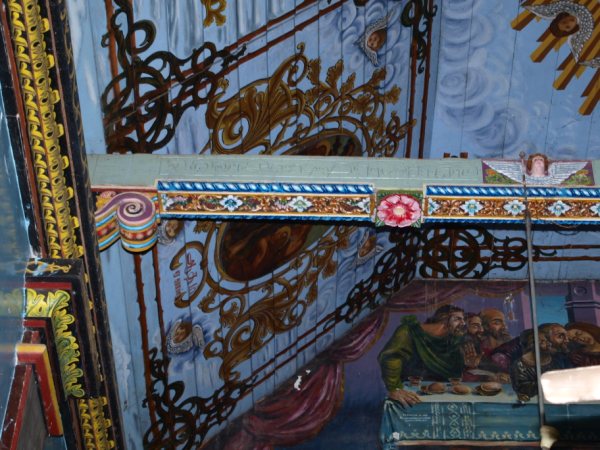
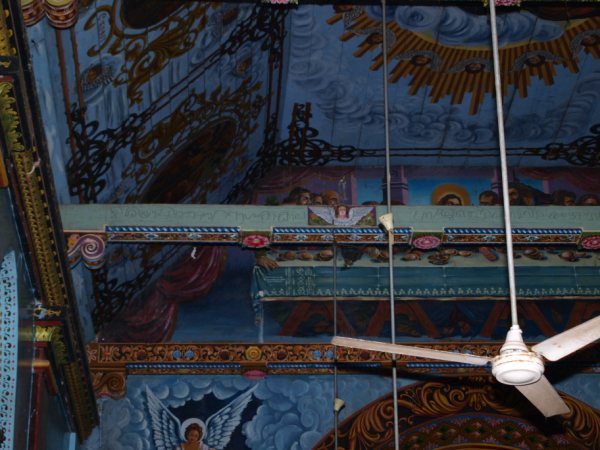
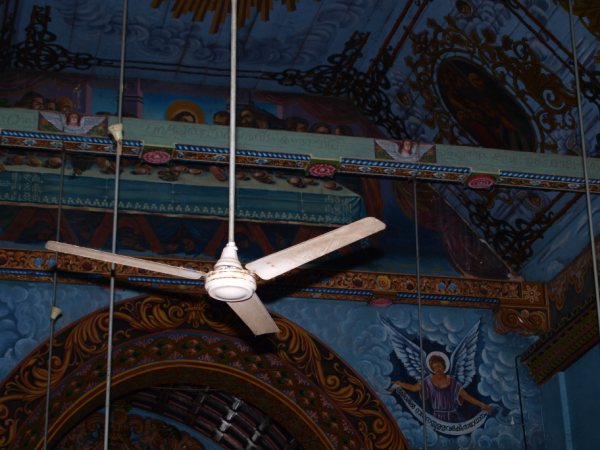
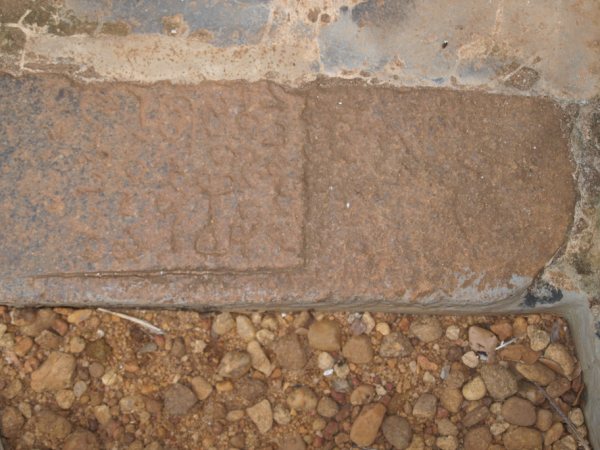
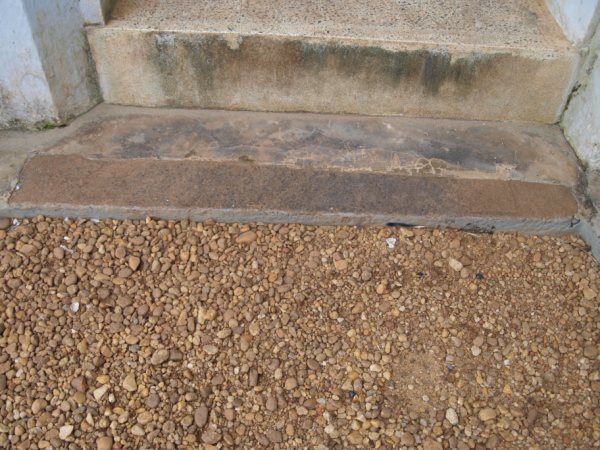
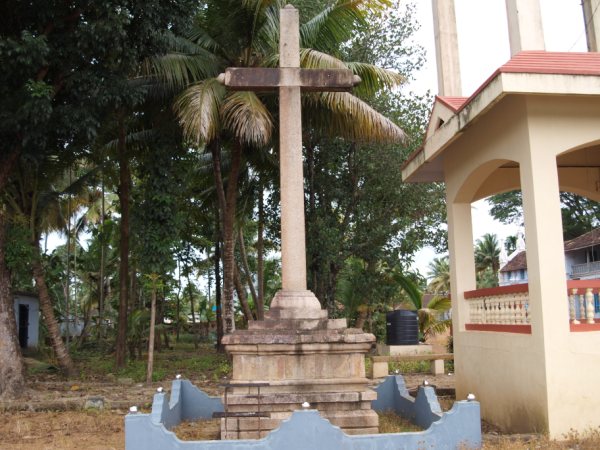
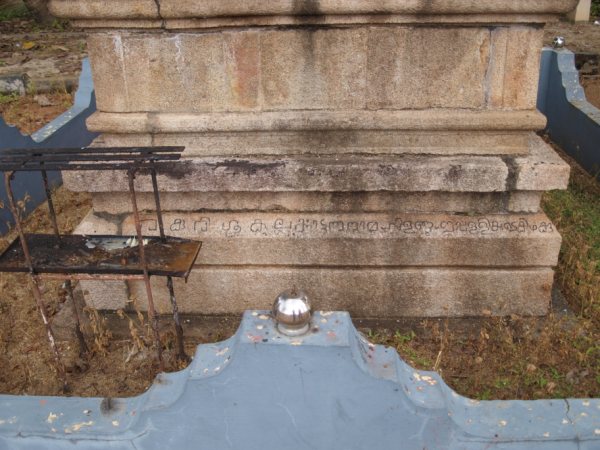
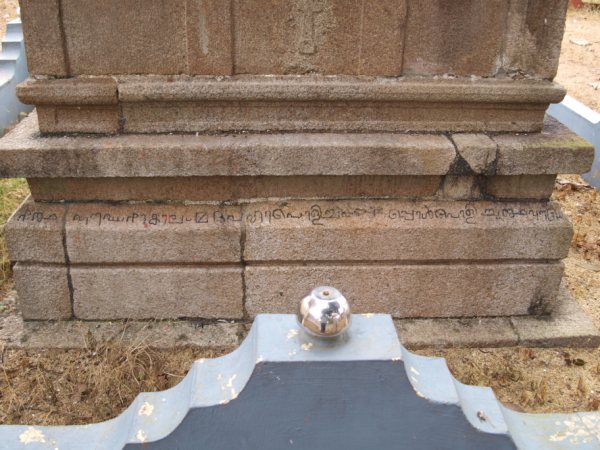
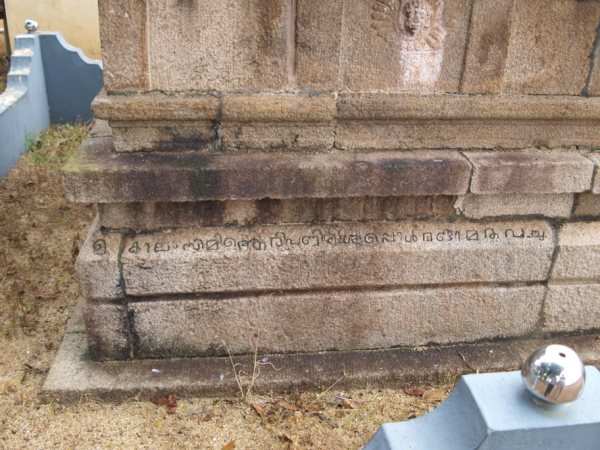
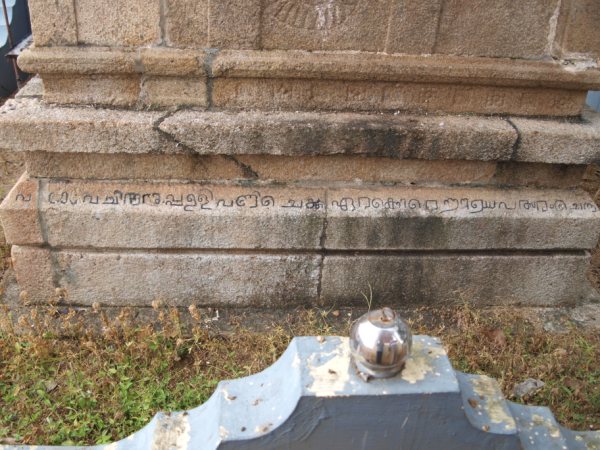
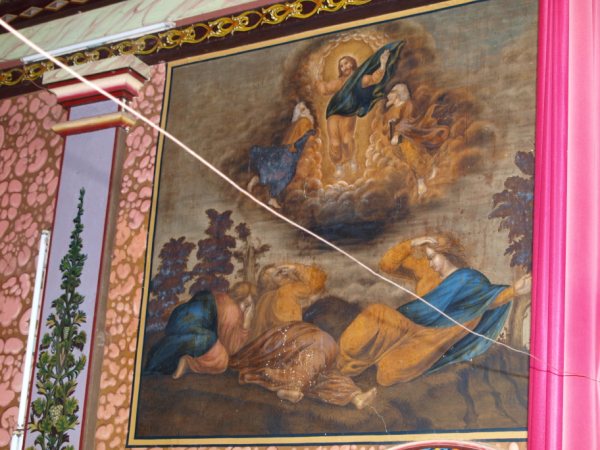
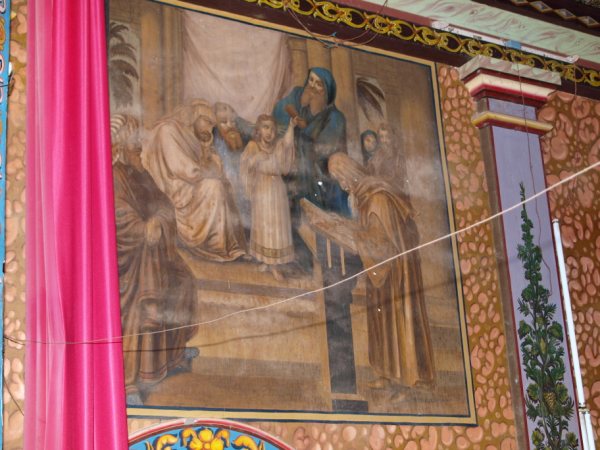
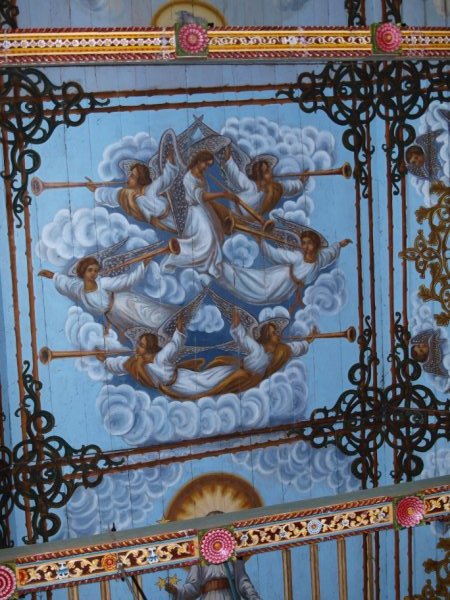
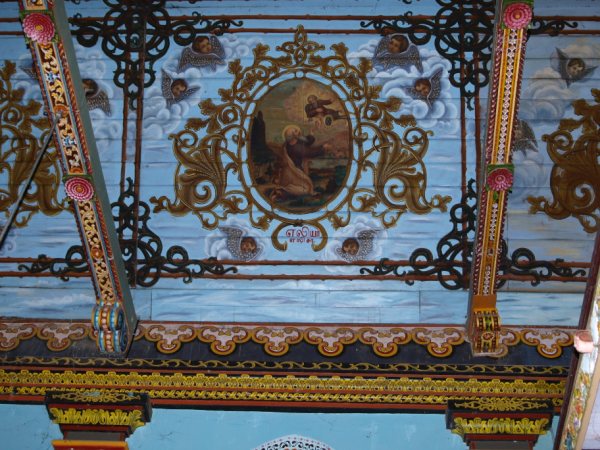
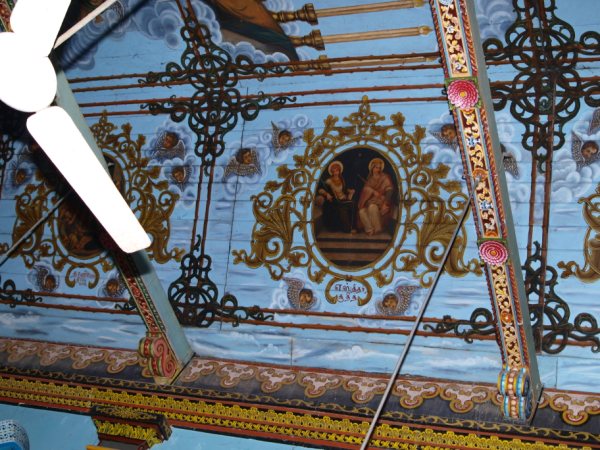
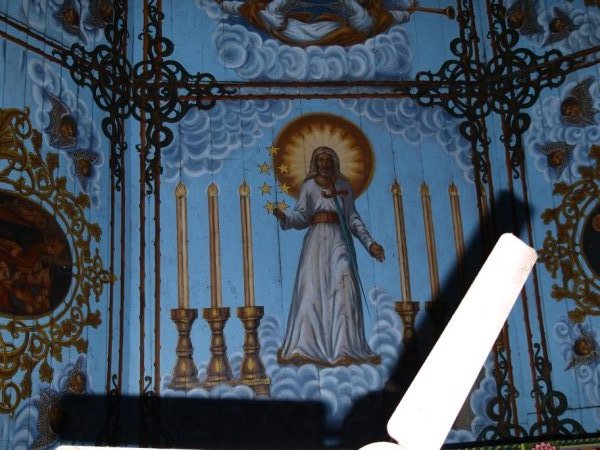
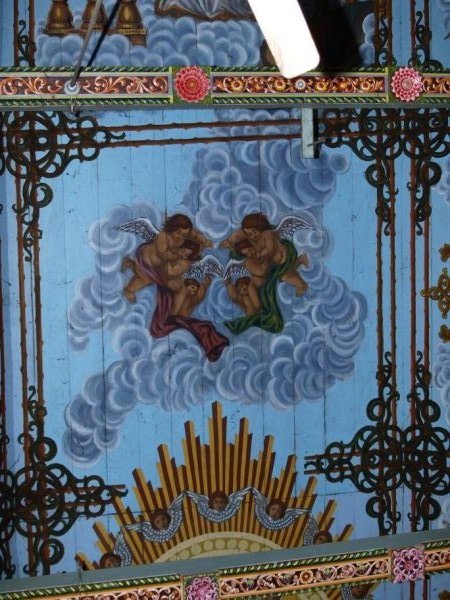
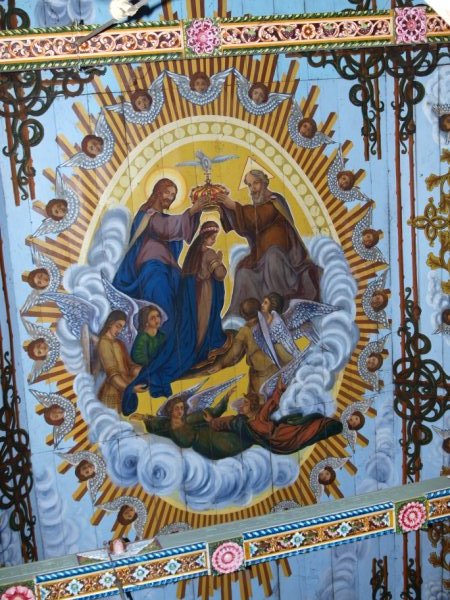
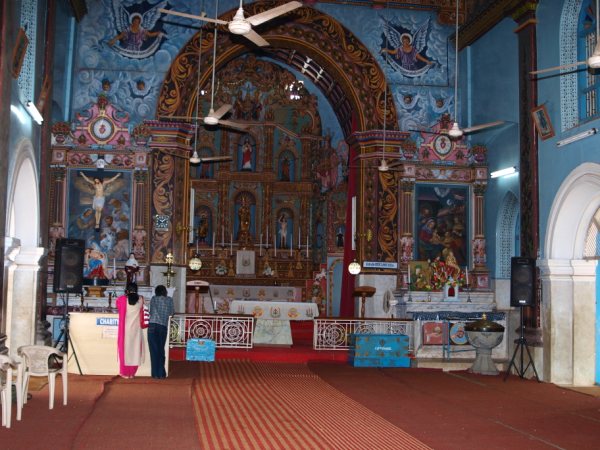
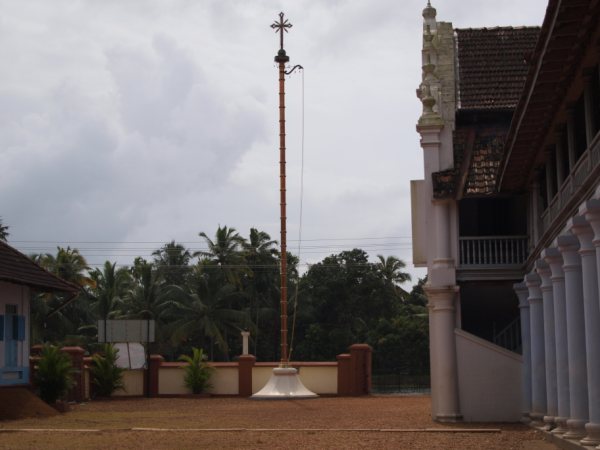

Dear Thomas Antony
A very well researched article about the Chamapukalam Church. Some of the information about the Church was new to me. Champakulam church has more documentation than many old churches. I don’t know if a classification as 1st generation and 2nd generation churches is possible as authentic information is not available.
There was an Armenian Merchant who was based in Alapuzha who did a major donation for the joint college Catholics and Jacobites were planning to set up. I don’t know if he had some connections with Chamapakulam Church.
Wasn’t there a feast for Kallada Moopan for some time?. Apart from Mar Andrews ( whose identity as East Syrian Bishop is not clear) there were other East Syrian Bishops in Malabar during that period. Mar Simon of Ada, who was a Chaldean Catholic Bishop, came in 1700. Missionaries used him to consecrate Angelus Franics as the Bishop of Catholics, and then he was send to jail (?) in Pondicherry, where he died. Mar Gabriel also came in 1709. He changed over to catholic side though he was sent by the Non Catholic Patriarch (?). He had more than 25 Churches, of both Jacobites and Catholics under him.
DEAR MR THOMAS ANTONY,
THANK YOU FOR REVEALING THE HISTORY OF KALLOORKAD ST MARYS CHURCH, CHAMPAKULAM. PLEASE ACCEPT MY HEARTIEST CONGRATULATIONS ON YOUR DETAILED RESEARCH WORK.
SYRIAN CATHOLIC CHURCH IN KERALA, MUST REALIZE THE RICH CONTRIBUTIONS OF CHAMPAKULAM CHURCH FROM AD 427, TOWARDS ESTABLISHING AND PROMOTING THE COMMUNITY IN KERALA.
BEING LOCATED IN THE HEART OF KUTTANADU, WITH ONLY WATER TRANSPORTATION AVAILABLE, THE CHURCH MAINTAINED RICH ECCLESIASTICAL AND HEALTHY RELATIONSHIP WITH HINDU RULERS,OTHER COMMUNITIES WHILE PROMOTING MARTHOMA NASRANIS AND LATER SYRIAN CATHOLICS.
THE SYRIAN CATHOLIC CHURCH IN KERALA AND ARCHDIOCESE OF CHANGANACHERY MUST REALISE THE HISTORICAL IMPORTANCE OF THE CHAMPAKULAM CHURCH AND RAISE THE STATUS OF THE CHURCH CONSIDERING VALUABLE CONTRIBUTIONS MADE BY KALLURKAD CHURCH,CHAMPAKULAM,
BEFITTING ITS HISTORY .
Dear Thomas Antony,
Very interesting and informative article! Good to read and learn on such ancient Churches from south Kerala as my native is North Kerala and we hardly know about Churches down south. The pics were really beautiful. I would love to visit this Church if I happen to visit Kerala in future. Thanks again.
Jackson
I would like to know if the date/year 427 AD as stated for Champakulam Church is actually historical and documented or part of oral legends ? As we see, the ancient Churches in Malabar all hold legends of certain dates and eras. Are these dates historically recorded anywhere ? Or are they just oral info ? Do we have churches that have dates documented or inscribed anywhere which are prior to the Mar Sabr Isho era (pre-9th cent. AD) anywhere in Kerala ? Would like to learn from anyone who knows anything on this. Thanks.
Jackson
Dear Antony:
This is such a well-written, and thorough article. Thanks for the new information and pictures. I now know where this 1st, 2nd, 3rd, etc., generation business comes from.
A small comment though … the following statement is not neutral (“Kallada Mooppan alias Anthrayose Kasseessa was an imposter who arrived in Kerala in 1676”) and makes a premature judgement on a man whom we don’t have very much objective information on.
The statements about this prelate are varied, depending on who is writing the statements: this should be the first sign that the information is unreliable at best. The Orthodox and Jacobites claim this individual to be a saintly man, who suffered from stomach ailments (due to Indian cuisine, climate, etc.) and for whom toddy was prescribed by local doctors. The Catholics claim him to be a drunk “imposter”. The term “imposter” is not clear: what was he posing as? A priest? It seems he was one (at least) judging by his vestments.
Further, consumption of alcohol does not necessarily mean one is a drunk alcoholic. From ancient times, alcoholic beverages were used by people when the water supply was of doubtful purity. A West Asian or other foreign cleric coming to Kerala would likely have some adjustment problems to the local water supply — perhaps the local alcohol would be a better substitute. Especially for the West Asians for whom alcohol is a traditional common beverage.
At any rate, Mar Andrews was the ancestral uncle of Parumala Mar Gregorios, who was a saintly man by all accounts; he is revered by the Orthodox and also by the old-fashioned Malankara Catholics alike. Without definitive information about who Mar Andrews was and who he said he was, perhaps we should show some restraint on our assessment of him.
Thanks Jackson,
It is the oral tradition that Champakulam Church was founded in AD 427. I don’t think there is any documentation available for any of the so called ancient churches. But for Champakulam, we have clear solid documentation going back upto AD1151 from the Champakulam open air rock cross inscriptions, which is unique.
There aren’t many churches which has documentation prior to AD 1151. I think, I have seen in Aruvithura church, some inscriptions dating back upto AD 900s.
For Champkaulam church also, the inscriptions on the step stone is not completely analysed, as far as I know. Nobody could read it fully as part of it is worn off. Only thing interpreted from the inscriptions is 844. As there are not much space before the numeric digits, the people who read it interpreted it as ME as AD is described as “Mishiha Piranna” which needs more letters and space while ME is usually described as “Kollam”.
So, we don’t know if this 844 is AD or ME. This rock is used as a step stone. There are so many stones used in the church. Who knows there may be more inscriptions out there on the undersurface of some other stones.
A quick question … not to dispute the oral tradition (well I suppose I am disputing it …) but could these dates in the fourth century actually be dates in the 4th century ME?
Let’s take the Church in Champakulam as an example. Here, AD 1151 is ME 326 if I’m not mistaken (1151-825). Now, 326 is not 427 but what’s a century between friends — especially when the AD 1151 date is not recorded explicitly. If I didn’t misread the article, the 1151 date is obtained not from a record written in 1151 AD but from a record written in 1821 saying that 1821 is approx 670 years from the date of construction of the Church. Perhaps the 670 figure is not exact?
I’m not trying to detract from the antiquity of this Church. In fact, I’ve noticed this kind of error in another Church, which is why I raise the question here. The error I’ve found previously was regarding Kadampanad Church. The Church historians claim it dates from the fourth century, and cite an immigration of Christians from Nilackel in the 4th century. Well, this immigration is quite well known, and it actually occurred in the 12th century (Nilackel -> Kanjirapally -> Kadampanad). So where does the 4th century figure come from? Likely, some sloppy historian took the ME 4th century date and thought that referred to AD 4th century.
Apparently many Churches were constructed in the centuries surrounding the 10th. Mavelikara’s St Mary’s Orthodox Church and Kayamkulam’s Church, Champakulam, Kadampanad, etc. Perhaps our “3rd/4th century” oral tradition dates stem from this wave of construction activity 1000 years ago, with the oral tradition missing the AD/ME distinction.
Judging by the copious migrations of Nasranis across the state, north to south, east to west, I highly doubt any oral traditions could survive from the 4th century (AD) except for, perhaps, some vague remembrances of our father Thomas.
very nice to read this good essay.there are more than 100 churches in Kalloorkad, Alappuzha, Koilmuk etc which traces from Champakulam. Another video on the Church.
httpv://www.youtube.com/watch?v=3xG7tKnzIp4
Dear John,
Re Kallada Mooppan,
Sorry, I did not want offend anybody. I used the word “imposter” as he reported to be claimed as a Patriarch appointed by the Pope to the St Thomas Christians but was not. His exact identity is disputable as M Kurian Thomas’s discussion in his book on Niranom Grandhavary. I have made some changes in the article.
Re the inscriptions on the Rock Cross, they were written in 1857. They have not explicitly record the year as AD 1151. But, they were well aware of the happenings up to AD 1151. They have recorded that “around 670 years after the ….”. It is not exact 670 but it should be within 50 years either way maximum. ( They did not record it as 600 years of 700 years.)So, adding 825 to the so called 427 figure, it will be 1252 which is a big difference. Again, we have to note that in AD 1151, there was a new Church built replacing an old one. See my arguments in the article. There is also an oral tradition that a new church was built in the land reclaimed from the river. All these points towards the possibility that in AD 1151, a new church was built in the present site. So, it may not be a misinterpretation of ME 427. In champakulam, the oral tradition is exact 427, not 300-400.
There is a possibility that all Southern Churches were built after Mar Sabor and Afroath. I think a serious research is needed in this area of Nasrani history.
Dear Jackson and all:
I’m also interested in better understanding the Churches down south. Here’s a page that discusses the Church at Thumpamon. The Church also has dates ranging from the 7th to the 9th century attributed to it.
The account starts at:
http://thumpamonocym.in/history1.html
and goes on for a few pages.
It also mentions a 10th century visit of some Syriac bishops.
Admin: does these names ring a bell? I quote the cite above:
“It is mentioned in the ‘Niranam Chronicles’ that in AD 905 that a Metropolitan named Mar Benaha accompanied by three others named Rabaan Younon and Maaravan visited the house of Kannakulam Mappilai in Kodossery Nadu.”
Dear John,
Your reference about East Syriac Bishops visiting Thumpamon,
Niranom Chronicles mentions about visitation of a Bishop Mar Denha in AD 905 (ME 80) with three others, Rabban, Younan, and Maravan.
Of these, Younan was buried in Udayamperoor, Rabban was buried in Niranom, Chennithala Thekkeveettil Kuruvilla’s house, Denha was buried in Kottakkupurathu Kodasserry Kannamkulam Mappila’s house and maravan was buried in Thevalakkara church. It also mentions that maravan is Mar Abo of Kadamattom Church. ( Niranom Chronicles were written from AD 1770-1806 period. So, these information could also be the available oral tradition recorded in AD 1800.)
Re Rock inscriptions of Champakulam, the inscriptions were recorded in AD 1857. It also talks about the events in AD 1821. But, for the events happened 670 years ago, it is not quoting the exact year. This may be because, the usage of AD was introduced only later and they did not want to convert the year system used 670 years ago. The system of AD might have been introduced by the Portuguese. The inscription on the beam also talks about AD 1730. So, we have to assume that pre Portuguese, we had another system for the calendar. This could be ME or Kolla varsham.
Niranom Chonicles also mentions about wide usage of Grecian/Seleucidae Era (Suriyani era)among Nasranis in the past which was originated in BC 312. I think that was used widely among the Nasranis pre Portuguese as the famous letters by four East Syrian bishops from India to the Patriarch Mar Elias says “in the year of Alexander 1801, there came three trustworthy Christian men from the remote regions of india to Mar Simon…..”.
So, the 427 figure and similar figures about other ancient churches must be a calculation by the European missionaries converting the Suriyani era to AD.
Dear Thomas Antony
I missed the fact that the feast of Kallada Mooppan was not celebrated in Champakulam Church. It is mentioned in this article that it was celebrated in Kallada, Puthiyacavu and Manarcaud Churches.
There is also another article about feast of Kallada Mooppan written by P M Patrose .I don’t have more information.
Dear John and Antony
In the period after 900 AD until 1490, the historically credible Bishop name is Mar Jacob of 1301 AD, from the surviving local MSS.
I have added few Bishops names from different sources In Prelates article. The Bishops in this period from that list are,
988 AD Mar Johannan.
1056 AD Mar Thomas
1119 AD Mar Johannan and his Suffragan Bishops
1222 AD Mar Johannan.
1231 AD Mar Joseph.
1285 AD Mar David.
1301 AD Mar Jacob
1407 AD Mar Jaballaha
Apart from the Niranom Chronicles as already mentioned, there seems to be a Syriac Missal at the Church of Kannankot near Quilon which gives a similar list.
This Syriac Missal MSS gives the following Bishops names,
905 AD- Bishop Adanaka ( Denha)
988 AD- Metropolitan Joannes
1056 AD- Bishop Thomas
1122 AD- Bishop Jacob
1221 AD- Bishop Jospeh
1285 AD- Metropolitan David
1407 AD- Bishop Avalogas ( Yavallaha)
The source of this information is Indian Antiquary 57 (1928), pp 164-165, an article titled Thomas Cana by TK Joseph and H Hosten. I don’t have more information as I have not yet got this article. It might be very interesting to check if this MSS is still extant and if so publishing this MSS and verifying its antiquity.
Cardinal Tisserant gives the following list – with mentioning that only Mar Jacob- 1328 AD is historically reliable and others are as from local and east syriac sources.
c.1000- Mar John
c.1056- Mar Thomas
c.1110- Mar John
c.1122-9 Mar John
c.1231- Mar Joseph
c.1285- Mar David
c.1295- Mar Paulos
c.1328- Mar Jacob
c.1407- Mar Yahballaha
There are some reliable details available about the Bishops who came after 1490.
Dear Admin,
As you have mentioned above, there was a list of East Syriac Bishops found in Kannamcode Church in Adoor reported by Fr Hosten which was published in “Kerala Society Papers” (series V p 237).
M Kurian Thomas, the author of the book on Niranom Grandhavary says that this list agrees with the list of Niranom Chronicles. This book is available in Oxford university Library. I am trying to get it. It looks like the book contains many interesting papers.
“It is mentioned in the ‘Niranam Chronicles’ that in AD 905 that a Metropolitan named Mar Benaha accompanied by three others named Rabaan Younon and Maaravan visited the house of Kannakulam Mappilai in Kodossery Nadu.”
I was interested to know where Kodassery Nadu mentioned above is
There is a Kodassery in Thrissur district, a hilly region east of Chalakudy which used to be under a fuedal lord called Kodassery Kartha. Just wondering if it is the same or is there another Kodassery in South Kerala?
Thanks for the list. I’m ashamed to say I’ve never come across this list! Since we have such a list, can anyone seriously doubt the strong connection between the East Syriac mother Church and the Church in Malabar? The nationalistic rewriting of history by people like Jeevan and the “Indian Christianity” movement is nice for a feel-good ego boost, but ultimately such drivel is based on non-existent foundations.
I don’t see “Marawan” or “Mar Avu” in the list, though.
Regarding the Mar Abo as Mar Sabor idea … The Thevallakara Christians claim to come during the Mar Sabor / Mar Aproth immigration as far as I know. Perhaps they brought the tomb of Mar Sabor over to Thev, after the destruction of the Kollam Church? Or maybe there’s another Mar Abo as M. Thomas Antony reports the Niranam Chronicle to say. It would be interesting to learn what the feast day of Mar Abo in Thev is … perhaps someone out there can translate:
http://www.marthamariamorthodoxsyrianchurch-thevalakara.in/index.html
and find out.
Mar Thomas of the 11th century and Mar Joseph of the 13th are interesting in particular … could these be the people who (maybe — hypothetically) helped bring a segment of the Black Jews to Christianity (hypothetically creating the Southist community)?
Alphy,
The Kodassery could be near Chalakkudi as you have suggested. I have cross checked the information with Kerala Society papers published in 1928.
Famous historian TK Joseph reports in his article about a paper MS in book form found in Karuthedathu family.( It seems that this is also a variant copy of Niranom Grandhavary)
It narrates- “5150 of the Era of Adam corresponds to year 1 of the Greek era. Year 311 of Greek Era corresponds to year 1 of the era of our Lord. Year 825 of the Era of our Lord corresponds to year 1 of the era of Quilon.
Now, during the 480 years from the coming of Thomas Cana to Malabar in 345 AD, upto 825 AD, Bishops came from foreign country gave authority to the Arch Deacon in Malabar thus managed the affairs. In AD 825 corresponds to year 1 ME two Bishops Mar Chavor and Mar Aprot came along with the merchant Savariso (Sabriso).In AD 905, 80ME, came the Bishop called Mar Denha. Together with him, there came to Malabar Raban, Younan, and Maravan(Mar Abo). Of these four who had come to Malabar, Younan was buried in the Church at Diamper, Raban was buried in the house of Kuruvilla of Thekkeveedu in Chennithala in the Niranom parish, and Denha was buried in the house of a mappila(Christian) of Kannamkulam in the country called Kodasserry outside the (cochin) fort. Maravan was buried in Thevalakkara church.”
We need get more information about Christians in that area ruled by Kodassery Karthas and any information about this tomb. In the past, St Thomas Christian did not have cemeteries. We can see the tombs of Arch deacons in Kuravilangadu in their land. The present church near the tombs is new. I have read in an article that there were other plots also near Kuravilangadu where tombs were preserved by Christians all of which are destroyed now. Are there any such tombs preserved in Kodasserry kingdom ?
To John Mathew,
The above mentioned manuscript enlists the following Bishops with years of arrival.
AD 988 Metropolitan Mar Yohannan.
AD 1056 ME 231 Mar Thomma
AD 1122 ME 297 MarYakko
AD 1221 ME356 Mar Youseph
AD 1285 ME 460 Metroploitan Daveedu
AD1407 ME 582 Mar Yabaloha (Yahb Aalaha)
Mar Abo is not in this list also. When it mentions about Mar Denha, the author says he is a Bishop, but no mention about Raban, Maravan and Younan as Bishops but the suffix Mar is used. In 1928, T K Joseph who was a learned historian has commented that Maravan is Mar Abo.The manuscript confirms that Maravan was buried in the Church at Thevalakkara.So, Maravan should be Mar Abo, not Mar Sabour.
The side extensions of the Alltar ie. the southern side and northern side may be built after the portuguese.Claiming an antiquity upto 5 th century merely by oral tradition is not fair. Certainly the church is very old but any way the looks never give a feel that it the present structure was built in 1100AD.If that much ancient, it of great value, you can contact the Cultural heritage Department of Kerala and probably do a carbon dating technique to attest the antiquity.
Dear Jessop,
Thanks for reading the article and for your comments.
Re the side altars- thronoses.
Why do you think that they were built after the Portuguese ? Please share your thoughts to all of us regarding this point.
If you look carefully those two thronoses we can see statues of crucifix on the left side side altar and Jesus Mary and Joseph on the right side. Those statues are definitely post Portuguese. But look behind those statues. See the video link. We can see murals behind the statues. Those murals are totally neglected because of these statues. On both thronoses, we can see murals of nativity. Surprisingly, on the left, we can see a crucifix in front of the nativity murals! (totally inappropriate!). This may be those ignorant people put those statues of Portuguse import in front of the nativity murals. That clearly shows that those murals and the statues are of different cultural and traditional origin. If those murals are of Post Portuguese time, they would have made a mural of crucifixion or scene of calvary behind the crucifix. I invite thoughts of other people also in this regard.
Re your comment, “Claiming an antiquity upto 5th century merely by oral tradition is not fair”. In the strict sense, I totally agree with you. I was presenting the available oral tradition and available documentation. Could I ask you, which other ancient church in Kerala has such a claim of antiquity other than oral tradition ? As far as I know, there aren’t many churches with clear documentation going up to AD 1150.
I haven’t claimed that the present structure was built in AD 1150s. The proto structure at the present site was constructed in AD 1151 according to the Champakulam cross inscriptions. The initial building was renovated many times, probably expanded side wards or towards the front. I have read about Kuravilangadu church that they expanded the church to the side making the right side thronose.
Re thronoses, are those European influence?. Someone has commented here that churches in the middle east don’t have side altars. But in Malabar, even those belong to West syriac group also have side altars- probably the remnant of their period under the Latin prelates.
There was a tradition in Malabar to have more than one dedication for a church. Many ancient churches were dedicated to St Mary. Later, they were dedicated to some other saints also. I have read that the Church at Udayampeeroor was dedicated to St Mary and Mar Sabor and Afroath at the same time until the synod of Diamper. Has this practice of multiple dedications for a church anything to do with side altars?
Why do you think that they were built after the Portuguese ?
East syrian &West syrian churches follow the jewish syangouge style in making their churches. When logically think ,the above two churches might have influenced the Kerala church before 1500 AD.The extent of influence may be stronger or weaker. The church altar shows the style of Nestorian &Oriental orthodox churches.This style may be more suitable for using veil. I don’t know whether the church is facing east?(altar facing east).The influence of Portuguese is clearly visible especially with statues. Many churches claim that they were built by St. Thomas. This is may be figuratively correct.
Now there are scientific ways to calculate the antiquity.
——————————————-
which other ancient church in Kerala has such a claim of antiquity other than oral tradition ? As far as I know, there aren’t many churches with clear documentation going up to AD 1150.
Re-Agree with you.
WHEN I FIRST LOOKED AT THIS WEBSITE RE-UNDERSTOOD MY NASRANI HERITAGE AND I BECAME DEEPLY INFLUENCED WITH THE WORKS DEVOTIONS PRAYERS OF MY COMMUNITY.
I CAME TO KNOW ABOUT MY FOREFATHERS LIFE AND THEIR WORK AND RESPECT TOWARDS THE
KERALA CHRISTIAN COMMUNITY.NASRANI CHRISTIANS ARE TOALLY DIFFERENT IN MANY ASPECTS.THE STORIES,HAPPENINGS AND THE BELIEFS OF THESE CHRISTIANS WERE NOT VEN TOLD BY MY GRAND PARENTS,PARENTS AND THE MEMBERS OUR CHURCH.NOW BEING INFLUENCED BY WATCHING THIS WEBSITE I AM CONTINUING MY RSSARY OFTENLY AND GOING TO CHURCH ALMOST EVERY DAY THIS WEBSITE HAS GIVEN ME SENSE OF KNOWLEDGE ABOUT MY ANCIENT COMMUNITY.IN THE FUTURE IF POSSIBLE I MAY WRITE A BOOK ABOUT MY NASRNI COMMUNITY.THANK YOU NASRANI .NET AND ITS MENMBERS FOR THEIR WORK
M Thomas Anthony,
The tomb of Mar Denaha , is the in family property of the Valiyaveetil family of Kudassanadu.
They call him, Mar Denaha of Tur Abdeen.
The Dukhrono is celebrated every year still.
The tomb of the person called Raban, is close to the Jacobite church in Chennithala, Mavelikara. I believe the tomb is in the property of the Nadayil familly.
Again the dukhrono is celebrated every year.
Maravan is ofcourse the Mar Abo of the Thevelakara church .
Yohannan is said to have lived in the Uthiyanperoor pally according to the Niranam Grandavari, can anyone identify the Church ?
Suraj
Dear Suraj,
Thanks for the information.
Where is Kudassanadu in Kerala ?
Mar Yohannan was buried in Udayamperoor- the church where the Synod of Dimaper took place. It is near Thrippoonithura.
Re the tombs of Mar Denha, Mar Abo and Mar Rabban, are there any inscriptions? When are these Dukhrono celebrated ?
When Menezes visited Kallurkadu church, he applied a trick to bring the people to his side. He gave children and women sweets called “Kozhukkotta”. Inside each Kozhukkotta, he had placed a coin called “Panam”. This is how he gained support of innocent villagers. The Malayalam saying “Kozhukkotta koduthal Kallurkadum nedam” [You can gain Kallurkadu by giving Kozhukkotta] came from this incident. This is mentioned in the book “Marthoma Nazrani Sabha Prathisandhikaliloode” written by Mar Joseph Perunthottam, Archbishop of Changanassery.
M Thomas Anthony,
Kudassanadu is in Allapuzha district on the boundary between Pathnamthitta and Thumpamon Diocese.
Mar Denha’s tomb has now been incorporated into a Chapel and the Dukhrono is on 4th march 2011.
Mar Raban’s dukhrono is celebrated on 9th August.
I had checked the Udayamperoor Church’s site, but there was no mention of any such tomb there.
I am now aware of any inscriptions on the tomb.
Suraj
Look at the photo gallery of the Church at Diamper, and you’ll see an altar where — supposedly — a few bishops and a few kings were buried. Perhaps that’s where the prelate was buried?
Niranom Chronicles says that Mar Younan was buried in the Church at Udayamperoor. The Church at Udayamperoor is an ancient one, supposedly founded in AD 510. Mar Afroath was based in the Church at Udayamperoor and I have read somewhere that Mar Afroath was buried there.
As per the website of the Church, in 1929, during an excavation, five tombs were found under the madbaha there, of these, two of them had the head on the western end and the rest three had the head on the eastern end and hence it was assumed that the two were of Kings and the three were of some prelates.
During the Synod, Arch Bishop Menesis destroyed many documents and hence there are no documentation available about these. Mar Sabour and Afroath alongwith other Persian Prelates were declared as heretics in the Synod and the Portuguese wanted to erase them from the history and that was why the tombs were hidden.Even now, when the tombs were discovered in 1929, they took all the bones and remains in a vessel and kept in different pits under the madbaha. So, no tombs are seen at present.
Antony: I never knew that Mar Aproth was based out of Diamper — it’s very interesting. Is this from Niranam Chronicles or is there another source that mentions this?
There’s another theory that the old (now nonexistent) Church of Kollam contained the tombs of Mar Sabor and Mar Aproth as well, right?
Also, regarding the placement of the heads … aren’t all Christians buried with the head in the west, facing east? Or do bishops and priests have a different arrangement?
It would be interesting to learn what was dug up back in 1929. Just bones, or would there have been artifacts as well? Does anyone have connections with the Church at Diamper, who could perhaps inquire?
Dear John,
Niranom Chronicles does not mention clearly about where Sabor and Afroath were buried.
I have read somewhere that Mar Sabor was based at Quilon and Mar Afroath was based at Cranganore.-( remember that nasranis were divided into two streams- Cranganore Nasranis and Quilon nasranis in the past.)
It is also reported in books that Mar Afroath was based at Udayamperoor Church where the King Thoma Villarvattom was based. Udayamperoor is in Cranganore nasrani area. Also note that many researchers who interpreted the Pahlavi inscriptions on crosses mentions about a name Afras as the one who is behind it and all the Pahlavi inscribed crosses found in Kerala are in the Cranganore nasrani area.
My understanding is Mar Sabor was buried at Quilon and Mar Afroath at Udayamperoor. I am trying to find the references.
The Church at Udayamperoor and its custodians wanted to erase the history of Mar Afroath and that is why, they do not claim its existance.
There are numerous artefacts found at the Church at Udayamperoor. There are numerous granite inscriptions including one which mentions about King Thomas of Villarvattom- funerary inscriptions in vattezhuthu.( Chennongalathu Parathu Villarvattom Thomma Rajavu nadu neengi = Chennamangalm Parathu King Thma Villarvattom passed away) There is reports about another granite slab which is lost now with inscription mentioning about ‘Cheenam parambil Mathulla Thampuran’s’ death- This also could be another King- Thampuran- Lord, King, Cheenamparambil and Chennamangalam are words with similar pronunciation.
There is an ancient open air granite cross also. It is reported that on the base of the cross, there is a niche and a granite statue of the Mother Mary was found in the niche.
We consider statues are introduced after the Portuguese but, are these granite statues really post Portuguese ? The Portuguese excavated two granite statues at Mailappore Saint Thomas Tomb. They must be pre Portuguese. The Mother Mary’s statue at Kuravilangadu is also granite.
Fr George Nedungatt describes about an ancient Temple at Udaipur in North India with Christian inscriptions on the wall describing a Grand Qurbana celebration in the tenth century and he found granite statues without head nearby. These could be ancient Christian statues destroyed. Are these pointing towards a time where we used granite statues like Hindus?
This is very interesting Antony. I mentioned something about other reported statues in Malabar: namely those of St Mary and St George that supposedly came from Nilackel.
See: http://nasrani.net/general-talk/#comment-29599
Do you have any more info on the statue of St Mary at Kur. Marth Mariam Church? The website has no picture of it, as far as I could see. What a glaring omission.
Also, any further details on the Church at Udaipur? That’s pretty fantastic that a Qurbana would be described on a temple — I’m surprised there are no other references to this.
Dear John,
Re Udaipur inscriptions.- It is not as exciting as I thought it would be.
Rev George Nedunagttu describes this inscription in a temple at Udaipur in his book ‘Quest for the Historical Thomas Apostle of India, a Re- reading of Evidence’. This is found on the door posts of the main entrance of the temple at Udaipur in the state of Madhaypradesh in central India. This is a sanscrit inscription incised on the stone door posts of the main entrance of the temple. This belongs to 11th century. This is written in medieval devanagari script, but the language is a mixture of pali and tamil! The different sentences are written without any space in between each word. This makes it difficult to decifer and hence there is no surprise there are different versions of interpretations.
There are two versions reported in the literature. One in a Hindu Brahminic sense by Kamal Kantha and the second, in a Christian sense by a French Jesuit missionary Fr Benedict Burthey SJ, radically questioning the authenticity of the first one. Fr Burthey first transcribed the text and then translated to Latin giving a word by word explanation.
So, it is not simple and very difficult to find which is the truth.
Rev Dr George Nedunagttu discusses this from a paper presented in French by Baron Textor de Ravisi, member of the Asiatic Society of Paris, an archaeologist and formal commandant administrator of Karickal, in the XII International Congress of Orientalists held at Academia dei Lincei, Rome. Baron studied the English translation by Kamala Kanta and the Latin translation by Fr Burthey.
Rev Nedungatt admits that the translation he presents cannot be claimed as fully authentic due to it being first translated to Latin and then to French and then to English.
According to Fr Burthey, this inscription speaks of Jesus Christ, His Holy Apostle Nadattigum Budha who arrived among us and a lengthy service conducted by a Chief Priest Zacharias with the help of twenty other priests. As the temple was not big enough to accommodate so many people, there were two consecutive services, each were participated by 4160 and 4339 people. The inscription also talks about a relic(Jeva Palktam) sent by the head of the priesthood, (Tadajjaja- most Holy Father, the Pope)Nicholas, enclosed in a metal capsule, which was authenticised by Arch Bishop Zacharias.Rev Dr Nedungattu says that this was Pope Victor who lived in AD 1057.
The inscription begins with an invocation.
Sagitta ! Schiigatse Aum nama ! Aum Para Brahmatse nama !
Kamala Kanth interprets this as an address to Ganesha, Shiva as follows.
“May success accompany this salutation to Ganesha, the Virgin’s son, the sovereign divinity !
Hail ! thee consort of Parvati (shiva) the source of prosperity, who has in each cheek three ears, ten hands, two animals to ride on, (thre Bull and the Lion) who carries the half moon on his forehead, the Gangeson his head. His whole person is covered with ashes and sorrounded by serpents; and he has blue neck and half of his body is embellished by Haimavathy, who wears in her ankles gold bangles shining with jewels.”
Fr Burthey interprets this as follows.
“He is the only son of the Most Blessed lady. May he be praised! Glory be to him who is the son of the most high……”
The text of the inscription is very lengthy describing very details of the ceremony conducted in the church as narrated by Rev nedungattu is given below.
“…….In order to fortify in the profession of the faith the unhappy Christians( Kritta) of the Kingdom of malwa, to the end that sinners being immersed in the regenerating water, they may become purified, and that being made Children of God, ………Nine centuries had rolled by since the glory and mercy of the uncreated, the divine orient the man of God, descended on the earth, and also that after having laid down the weight of his mortality he entered upon the possession of his glory, and after his holy apostle Nadattigam Budha arrived among us, we should say , according to era of Emperor Vikrama, 1116 years,(1160 AD) the new era, which ought to be given here together with the one which marks the nine centuries. But after this time, he who carried upon his shoulders the cross, the conqueror of his enemies became our peace, one records 981 years. ……This collation being at an end, and the part of the temple that could be occupied filled up, Tansigaye (name indicates a Brahmin Aryan) delivered a very pathetic(moving) exhortation, in which he conjointly extolled the nature of the Holy Eucharist(Prasadam) and the power of the Dispensatrix (Atty)
The sermon finished, the clergy(Sabha adhikari) according to the ancient custom of the country went and remained standing in the western part of the temple. Then the most illustrious Sigyattu(This is a Syrian name), the Grand Pontiff(Auma maha Guru) began the sacred ceremony. The whole assembly, following him attentively assisted at the sacrifice of life with all the veneration due to it. And as the divine service was being done with unusual solemnity, a great number of Priests (Tada) forming three rows about and below the Pontiff, celebrated together with him filled with great fervour.
Meanwhile, The Lord of the place, prince of Blood Royal, bore with very great modesty, the offerings which he had collected from the people, and when he had placed them upon the sacred stone at the foot of the crucifix, the bell ringer (kala dasi atma), whose duty it was to to give various signals to the people, sounded the brazen instrument.
When the Chief celebrant having gathered the offerings in a single heap, and having presented the most holy chalice of the sacrifice(pari puja patram) to be refilled, sang alone in supreme ecstasy. The time soon arrived when he who works wonders, incomprehensible in the heart of man was to come down from heaven in order to rise from the oblations being born once more in answer to our prayers.
And , the consecration finished(Nittar Maittam), he who is in the heavenof heavens, is there, offering himself with his real body and soul, with his sovereign and divine nature…….”. (G Nedungattu, ‘ The Quest for the Historica Thomas Apostle of India, a re-reading of evidence’ Theological Publications in India, Bangalore, p285-289 )
See the following link also.
http://www.ewtn.com/library/CHISTORY/christindia.HTM
Among the mutilated granite figures found in the temple, Rev Nedungattu has noted a female figure holding a child in her left hand while the right hand is held high with the palm showing abhaya mudra.The upper part of the child’s body has been completelt distroyed. This could be Mother Mary holding baby jesus in the hands. Fr nedungatt consulted two Christian Scholars in Sanscrit and they were of the opinion that Mother holding a Baby in the hjands is not a traditional Hindu motif.( G nedungattu, Historical….p298)
The Granite statue of Mother Mary at Kuravilangadu is said to be about 700 years old, holding Baby Jesus in her hands. This is decorated well with paintwork. No further details are available to me.
Dear Antony:
Thank you very much for digging up this information! Well, at any rate, I think someone with knowledge of the languages needs to look at this again to avoid the fourth hand translation. I suspect some of this may be a bit of creative writing by over-eager missionaries.
Regarding the mother with child motif, I don’t know. If you go to google images and enter in “Krishna Mother and Child” or “Pavathy and Ganesha” you’ll find a plethora of Hindu imagery with the mother and child motif.
Thanks for the link to the article by Fr. Nedungatt.
According to:
http://cat.inist.fr/?aModele=afficheN&cpsidt=20467826
“An ancient Sanskrit inscription in what is now a Hindu temple in central India has been interpreted both in a Hindu sense and horizon by a Brahmin scholar Kamala-Kanta and in a Christian sense and horizon by a French Jesuit missionary Benoît Burthey of the Madura Mission († 1895). According to the latter, the long inscription is the record of a Christian church built in 1060 and dedicated to Mary, “the Mother of God.” It recalls the salvation of humanity accomplished by the incarnate Son of God, “the Divine Orient,” who sent his apostle to India and dispelled all darkness. For the dedication, the Holy Mass was concelebrated by a great number of priests, twenty of whom distributed Holy Communion to a vast assembly. The pope, “the Supreme Pontiff,” had sent a relic, the authenticity of which was ascertained by Archbishop Zacharias. All this speaks of a flourishing Catholic (not Nestorian!) Christianity. However, this inscription is ignored by leading Hindu scholars and only a small fraction of it is published by the Archaeological Survey of India in its Corpus Inscriptionum Indicarum, vol. VII (1978). This is intriguing and adds to the interest of this (temple?) inscription, which needs to be first published in full, transcribed, translated and then interpreted.”
This is very interesting … he is trying to claim a connection to the Roman Catholic Church directly. However, in your earlier post, he refers to a Syrian name. I think he’s a little confused.
Regardless, since Fr. N actually visited this temple, it would have been nice if he could have taken some photographs to preserve this and allow further study! Perhaps he has?
Hello folks,
I ‘ve always felt that we all should start researching on the inland Syrian Christian settlements such as Aruvithura, Kuravilangad, Kadambanad, Mylacombu, Pazhuvil, Chattukulangara and Angamaly. The Churches in these places are undoubtedly ancient, and have been the mother churches of many other Pre- Diamper era Churches in Kerala. These Churches, are definitely the 2nd generation churches that were set up by the Nasrani community that migrated inland from their 1st generation churches along the coast.
I dont believe the 7 Thomasine Churches theory, as there are barely any valid historical data to substantiate the theory with. But one can clearly understand from genuine History that Kollam, Kodungallloor (Muziris) and Kayalpattinam (Chayal) in coastal Tamil Nadu were one of the 1st generation Syrian Christian settlements of Southern India.
I’d be grateful if someone could give give info on this!
Can someone tell me the origin of the name “Cherian”.Is it semitic in origin or borrowed from Tamil.
The Marakkars of Kozhikode (Muslims) originate from two families ,one of whom is called Cherian Marakkar
I can think of a possible explanation. The name of James the Less, the Apostle and first bishop of Jerusalem, is known as Quiriakkose in East Syriac. Quiriakose, who happens ro be the only bishop from among the 12 Apostles, is held in high esteem by the East Syriac Churches. Quiriakose, became Kuriakose or Kuriako (like a literal translation of Jacob the Less). The next progression of Kuriakose is Cheria Yakov, which got further shortened as Cherian. (Just a guess). God bless. Mar Walah! (Jn 20:28)
The origin of the name is from Zacharia to Skaria, Cheria and Cherian
Regarding origin and meaning of the Nasranee name “Cherian”
From http://www.ancestry.com/name-origin?surname=cherian
Cherian Name Meaning
Indian (Kerala): derivative of Hebrew-Aramaic Zecharya (see Zacharias), and variant of Zacharias among Kerala Christians. The final -n is the Malayalam third-person masculine singular suffix. In India it is found only as a given name, but in the U.S. it is also used as a family name among families from Kerala.
From http://genealogy.familyeducation.com/surname-origin/cherian
Last name origin & meaning:
Indian (Kerala): derivative of Hebrew-Aramaic Zecharya (see Zacharias), and variant of Zacharias among Kerala Christians. The final -n is the Malayalam third-person masculine singular suffix. In India it is found only as a given name, but in the U.S. it is also used as a family name among families from Kerala.
From http://genealogy.familyeducation.com/surname-origin/zacharias
Last name origin & meaning:
German, Greek, English, etc.: from the New Testament Greek Biblical personal name Zacharias, Aramaic and Hebrew Zecharya, composed of the elements zechar ‘to remember’ + ya ‘God’. This name was borne by a Biblical prophet and in the New Testament by the father of John the Baptist, for which reason it achieved a modest popularity among Gentiles during the Middle Ages.
Avaran – Avarachan – is from Aharon / Abraham?
The Hebrew version of Abraham is Avraham and this name is still prevalent among people of Israelite/Jewish origin. The Hebrew name Avraham and the Nasranee names Avrachan and Avara are variants of the same name Abraham.
A Great News. Champakulam church has been declared as a Basilica.